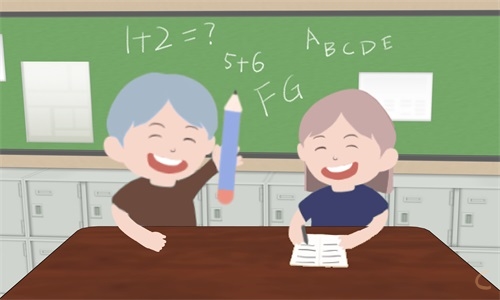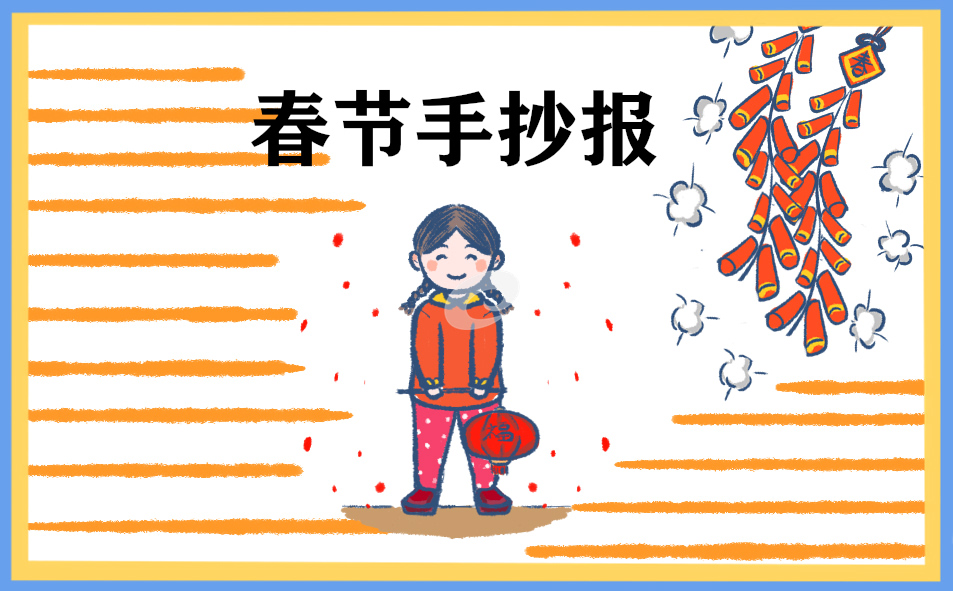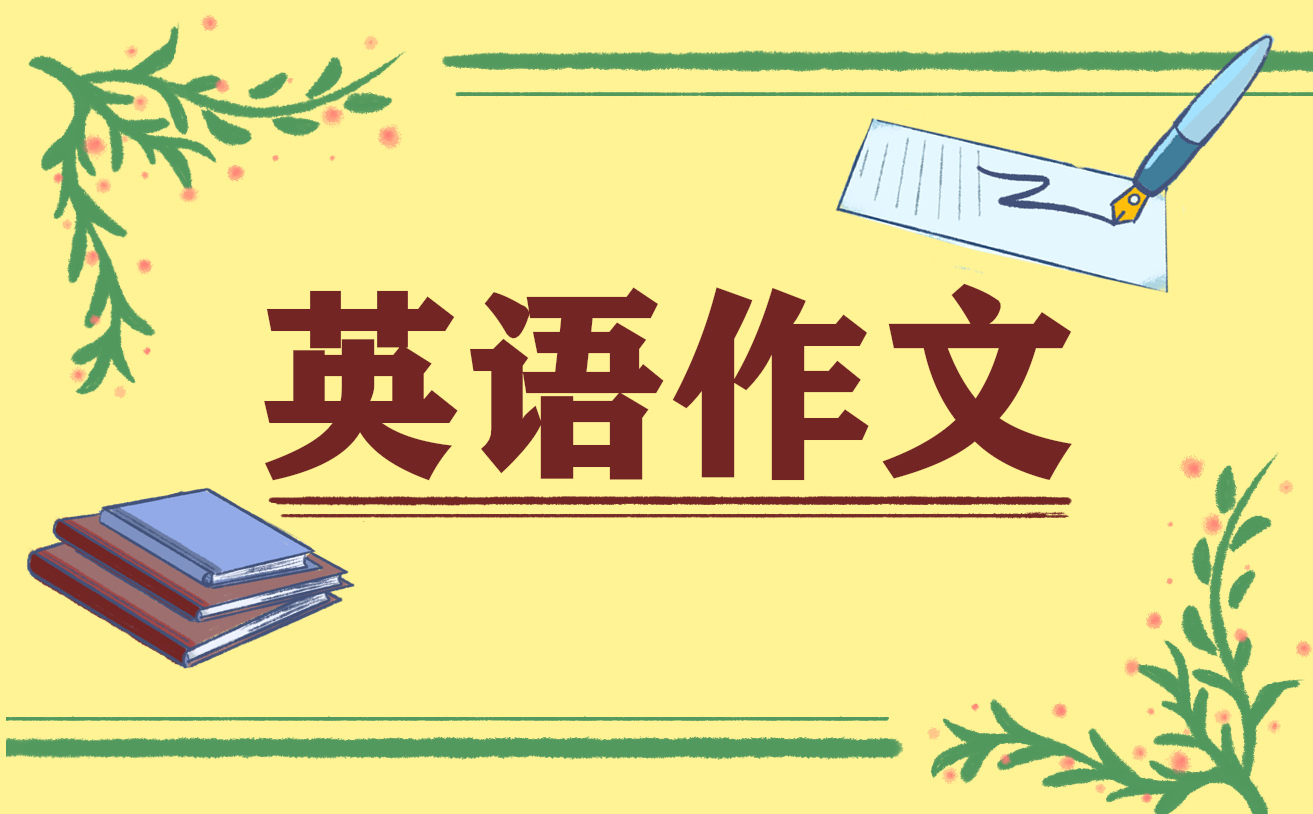GRE写作高效提分建议分享 申请文科专业请关注作文成绩,,快来看看吧,下面小编就和大家分享,来欣赏一下吧。
GRE写作高效提分建议分享 申请文科专业请关注作文成绩
GRE作文分数价值分析
许多人可能都觉得,作文独立计分不算入总分,可能其分数重要性并不是太高。这种想法其实是存在很大错误的,原因主要有两点:
1. 文科院校看重GRE作文成绩
众所周知,GRE考试作为一门研究生阶段入学的综合能力测试,其考试成绩可以用来申请全美各大学校的大部分研究生专业和项目。理科项目一般不需要作文得分,更看重的是GRE总分和GRE数学部分的成绩。而文科项目除了总分和语文部分成绩外,对于作文也往往会提出专门的分数要求,在这一点上越是优秀的学校越是明显。而假如考生想要申请的是排名靠前,在TOP20以内的顶尖文科名校,那么GRE作文至少也需要考出4分以上的成绩才能过关。根据官方发布的最新数据显示,2016年中国考生的GRE作文平均成绩仅为3分,因此大家想要获得优秀文科院校的青睐,就需要在作文方面获得超过大部分考生的平均水准的成绩。
2. 作文成绩是录取重要参考指标
同时,由于目前许多顶级名校的申请人数过多,招生官在初步筛选申请者时,往往会采取先根据GRE得分一刀切的方式,把一定分数线以下的考生直接排除。而在剩下的考生中,哪怕你的GRE总分超过别人不少,但如果作文分数偏低,那么你的被录取可能性就会降低。可以说,在GRE总分处于同一水平的情况下,考生GRE作文得分高低将成为衡量考生水平的重要参考指标。
GRE写作高效提分建议分享
因此,GRE考生如果申请的是文科类院校专业,那么作文成绩就必须要进行提升,而提分的具体要点可以归纳为以下四个方面:
1. 整体结构
文章的整体结构框架是一篇作文好坏的最重要标准。一般来说,一篇标准的GRE高分作文,按照开头,结尾加上中间三个段落的五段式写法是比较常见的。因此,考生对于一篇文章的写作,至少要列出3个分论点,确保中间三段言之有物,同时开头结尾也需要发挥出各自相应的引导和总结作用。
2. 逻辑论证
GRE作文有两篇,而无论是立论文ISSUE还是驳论文ARGUMENT,其本质都属于议论文,因此让文章显得有说服力就成为了关键所在。无论是让自己的论点能够站得住脚,还是让对方的观点显得错误百出,都需要考生通过逻辑论证来得以实现。因此,逻辑论证的合理性、对观点挖掘的深度,以及分论点之间的的连贯性,都考生需要在写作中体现出来以支撑逻辑论证。
3. 遣词造句
一篇好作文自然离不开词句上的运用。合理正确没有语法错误只能算是达标,想要让GRE作文得到4分以上的评价,考生就需要在达标以上进一步进行遣词造句的优化运用。句式使用上需要多样化,避免简单句的连续出现,但也不能过度堆砌长难句而让文章显得累赘。词汇运用上不能重复使用相同词汇,要体现出一定的变化展现词汇量,但也要确保所用词汇的正确表达,不能为了追求新颖而滥用生僻词汇,也需要避免词汇间错误搭配的问题。
4. 字数篇幅
虽然GRE考试对于作文字数篇幅从来没有提出过明确要求,但根据官方公布的各类高分范文来看,一般来说字数在400-600字是最佳范围。这是因为篇幅过短的文章,容易给考官留下考生写作能力不足,无法表达出自己想法的印象,但篇幅太长同样会给人留下啰嗦累赘的感觉。因此把文章的篇幅字数控制在400-600字是最为合适的做法。
总而言之,GRE写作成绩无论从考试本身出发而是从招生录取角度考虑都是相当重要的,哪怕不计入总分,考生也应该投入足够的精力时间认真备考而不是随意打发敷衍,如此才能保证一个足以匹配大家高分总分的写作得分。
GRE写作满分作品
题目:
"Students should memorize facts only after they have studied the ideas, trends, and concepts that help explain those facts. Students who have learned only facts have learned very little."
学生们在记忆知识的时候应该先学习有助于解释那些知识的理念、潮流和概念。仅仅死学知识的学生是学不到什么东西的。
正文:
The speaker makes a threshold claim that students who learn only facts learn very little, then concludes that students should always learn about concepts, ideas, and trends before they memorize facts. While I wholeheartedly agree with the threshold claim, the conclusion unfairly generalizes about the learning process. In fact, following the speaker's advice would actually impede the learning of concepts and ideas, as well as impeding the development of insightfuland useful new ones.
Turning first to the speaker's threshold claim, I strongly agree that if we learn only facts we learn very little. Consider the task of memorizing the periodic table of elements, which any student can memorize without any knowledge of chemistry, or that the table relates to chemistry. Rote memorization of the table amounts to a bit of mental exercise-an opportunity to practice memorization techniques and perhaps learn some new ones. Otherwise, the student has learned very little about chemical elements, or about anything for that matter.
As for the speaker's ultimate claim, I concede that postponing the memorization of facts until after one learns ideas and concepts holds certain advantages. With a conceptual framework already in place a student is better able to understand the meaning of a fact, and to appreciate its significance. As a result, the student is more likely to memorize the fact to begin with, and less likely to forget it as time passes. Moreover, in my observation students whose first goal is to memorize facts tend to stop there--for whatever reason. It seems that by focusing on facts first students risk equating the learning process with the assimilation of trivia; in turn, students risk learning nothing of much use in solving real world problems.
Conceding that students must learn ideas and concepts, as well as facts relating to them, in order to learning anything meaningful, I nevertheless disagree that the former should always precede the latter--for three reasons. In the first place, I see know reason why memorizing a fact cannot precede learning about its meaning and significance--as long as the student does not stop at rote memorization. Consider once again our hypothetical chemistry student. The speaker might advise this student to first learn about the historical trends leading to the discovery of the elements, or to learn about the concepts of altering chemical compounds to achieve certain reactions--before studying the periodic table. Having no familiarity with the basic vocabulary of chemistry, which includes the information in the periodic table, this student would come away from the first two lessons bewildered and confused in other words, having learned little.
In the second place, the speaker misunderstands the process by which we learn ideas and concepts, and by which we develop new ones. Consider, for example, how economics students learn about the relationship between supply and demand, and the resulting concept of market equilibrium, and of surplus and shortage. Learning about the dynamics of supply and demand involves (1) entertaining a theory, and perhaps even formulating a new one, (2) testing hypothetical scenarios against the theory, and (3) examining real-world facts for the purpose of confirming, refuting, modifying, or qualifying the theory. But which step should come first? The speaker would have us follow steps 1 through 3 in that order. Yet, theories, concepts, and ideas rarely materialize out of thin air; they generally emerge from empirical observations--i.e., facts. Thus the speaker's notion about how we should learn concepts and ideas gets the learning process backwards.
In the third place, strict adherence to the speaker's advice would surely lead to ill-conceived ideas, concepts, and theories. Why? An idea or concept conjured up without the benefit of data amounts to little more than the conjurer's hopes and desires. Accordingly, conjurers will tend to seek out facts that support their prejudices and opinions, and overlook or avoid facts that refute them. One telling example involves theories about the center of the universe. Understandably, we ego-driven humans would prefer that the universe revolve around us. Early theories presumed so for this reason, and facts that ran contrary to this ego-driven theory were ignored, while observers of these facts were scorned and even vilified. In short, students who strictly follow the speaker's prescription are unlikely to contribute significantly to the advancement of knowledge.
To sum up, in a vacuum facts are meaningless, and only by filling that vacuum with ideas and concepts can students learn, by gaining useful perspectives and insights about facts. Yet, since facts are the very stuff from which ideas, concepts, and trends spring, without some facts students cannot learn much of anything. In the final analysis, then, students should learn facts right along with concepts, ideas, and trends.
新GRE Issue写作范文透析
Topic
The following is a letter to the editor of an environmental magazine:"The decline in the numbers of amphibians worldwide clearly indicates the global pollution of water and air. Two studies of amphibians in Yosemite National Park in California confirm my conclusion. In 1915 there were seven species of amphibians in the park, and there were abundant numbers of each species. However, in 1992 there were only four species of amphibians observed in the park, and the numbers of each species were drastically reduced. The decline in Yosemite has been blamed on the introduction of trout into the park's waters, which began in 1920 (trout are known to eat amphibian eggs). But the introduction of trout cannot be the real reason for the Yosemite decline because it does not explain the worldwide decline."
Sample Essay
In this argument, the writer of the letter concludes that global pollution of water and air has caused a decline in the number of amphibians worldwide. To support his or her conclusion, the writer cites the results of two studies, seventy-five years apart, that purportedly show that the number of amphibians in one park in California, Yosemite National Park, have drastically declined. Additionally, the writer casts aside a given reason for the decline, stating that the introduction of trout to the park (who are known to eat amphibian eggs) does not explain the worldwide decline in the number of amphibians. This argument defies simple logic and suffers from several critical fallacies.
First of all, the argument is based on only two studies in one specific part of the world, Yosemite National Park in California. It is impossible to pinpoint a worldwide theory for the decline of amphibians based on any number of studies in only one specific location in the world - the specific varieties of amphibians, geographical conditions and other location specific variables prohibit such a sweeping generalization. One very specific location cannot be used as a model for all other locations, even within one particular country, let alone the entire world. The writer provides no evidenced whatsoever that links the Yosemite study with any purported effects anywhere else in the global environment.
Secondly, the two separate studies were done seventy-five years apart. There is no evidence that the two studies were conducted in a similar manner over the same duration of time or even over the same exact areas of Yosemite National Park, or that the exact same study methods were used. For example, perhaps the first study lasted over an entire year and was conducted by twenty-five experts in amphibious biology, resulting in the finding of seven species of amphibians in abundant numbers. By contrast, perhaps the second study was conducted over a period of one week by a lone high school student as a school science project. The writer offers no basis on which to compare the two studies, leaving it open as to whether the two are truly comparable in their breadth, scope and expertise.
Finally, the writer notes that the decline in the amphibian population has been blamed on the introduction of trout into the park's waters in 1920, but then dismisses that argument on the purely specious basis that it does not explain the worldwide decline. This part of the argument blithely dismisses the very relevant fact that trout are known to eat amphibian eggs. This attempt to "prove a negative" is the last resort of those in search of some vain attempt to prove the truth of the matter that they are asserting. It is basically impossible to "prove a negative"; this is an attempt to shift the burden of proof back on to the nonbelievers of the argument. The global environmental situation and that of Yosemite National Park are not perfectly correlated, and the fact that the trout may very well be responsible for the decline cannot simply be dismissed without further proof.
In summary, the writer fails to establish any causal relationship between global air and water pollution and the decline of amphibious life worldwide. The evidence presented is extremely weak at best and narrowly focuses on one tiny area of the globe, as well as putting forward as proof two studies about which almost nothing is known. For a stronger argument, the writer would need to directly put forth evidence associating air and water pollution with not only the decline at Yosemite but also throughout other areas of the world.(599 words)
[题目]
下述文字摘自一封致某环保杂志编辑的信函:“全球两栖动物数量的减少明显标志着全球性水与大气的污染。对加利福尼亚州约塞米蒂国家公园内两栖动物所作的两项研究可证实我的这一结论。1915年公园内有七个物种的两栖动物,每一物种都拥有丰富的种群数量。然而,1992年,在公园内所能观察到的两栖动物物种仅为四类,且每一物种的种群数量已骤然下降。约塞米蒂公园动物数量减少被归咎于始于1920年的将鲑鱼引入公园水域的做法(众所周知,鲑鱼喜食两栖动物所产的卵)。但鲑鱼的引入不可能成为约塞米蒂公园动物数量减少的真正原因,因为它无法来解释全球范围内的动物数量减少。”
[范文正文]
在本项论述中,信函作者的结论是,全球性水与大气污染已致使世界范围内两栖动物的数量减少。为了支持其论点,作者援引了两份时隔75年之久的研究结果,这两份结果据称可证明加利福尼亚州某一公园――即约塞米蒂国家公园――内两栖动物的数量锐减。此外,该作者撇开了动物数量减少的一个已知原因,陈述道,将鲑鱼引入公园(据称,鲑鱼喜食两栖动物所产的卵)这一做法不足以解释世界范围内两栖动物数量上的减少。这一论点有悖于简单的逻辑,犯有一系列关键性的逻辑谬误。
首先,该论点所依据的仅仅是世界上某一特定地点――即加利福尼亚州约塞米蒂国家公园――内的两份研究。围绕着两栖动物数量减少这一问题,如果仅以世界上一个特定的地点为样品,再多数量的研究也无法得出一种精确的、适用于全世界的理论。两栖动物的具体种类、地理状况以及其他因地点而特异的变数均不允许我们作出如此一概而论的总括。一个非常具体的地点不能用作一个代表所有其他地点的模型,即使在一个特定的国家内也不行,更不用说在整个世界范围内了。信函作者没有提供任何证据将约塞米蒂公园的研究与全球环境中任何其他一处地方的任何所宣称的效果联系起来。 其次,所提及的那两项互为独立的研究时隔75年之久。没有证据可证明这两项研究是在相同的时间跨度内以相似的方式进行的,或是在约塞米蒂公园完全相同的地点进行的,或所使用的研究方法绝然相同。
例如,第一项研究可能持续了整整一年之久,且是由两栖动物生物学领域的二十五位专家共同进行的。结果是发现了七大种类数目众多的两栖动物。相反,第二项研究可能是一位高中生孤身一人所做的学校的一个科学课题,仅为期一个星期。信函作者没有提供将此两项研究进行比较的基础,从而使两项研究在其广度、范围以及专业水准方面的可比性不得而知。 最后,信函作者指出,两栖动物种群数量的减少,已被人归咎于1920年将鲑鱼引入公园水域这一做法,但紧接着又以该论据无法解释世界范围内动物数量减少这一似是而非的依据将该论据予以否认。信函作者论述中的这一部分漫不经心地将一个极为相关的事实弃置不顾,即众所周知,鲑鱼喜食两栖动物所产的卵。这种"prove a negative "的尝试往往是这样一类人所惯用的最后伎俩,他们竭力寻找某种徒劳的尝试,力图去证明他们所宣称的事物的真理。从根本上讲,"prove a negative"是不可能的。这样一种做法是试图将论证的负担重新转嫁给不相信该论据的人。全球的环境情形与约塞米蒂公园的情形并不绝然对应。鲑鱼极有可能造成了两栖动物数量减少这一事实在缺乏进一步证据的情况下是断不能轻易予以否认的。
概括而言,信函作者没能在全球空气和水污染与世界范围内两栖生命数量减少之间建立起任何因果关系。该作者所拿出的证据充其量也是极为苍白无力的,狭隘地将焦点集中在世界的一片极小的区域上,作为证据而援引的两项研究几乎不能说明任何问题。欲使其论点更具力度,信函作者尚需摆出直接的证据,将水和空气污染不仅仅与约塞米蒂公园的两栖动物数量减少联系起来,而且也与世界其他地方的动物数量减少联系起来。
GRE写作高效提分建议分享 相关文章:
1.2019中考作文七大高效提分技法
GRE写作高效提分建议分享
下一篇:返回列表





